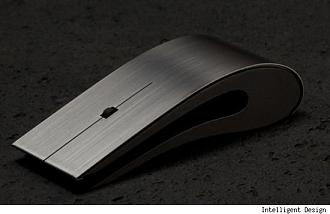Exposing the cost of titanium components

From a theoretical point of view the cost of titanium needn’t to be that high. After all, titanium is one of the most available elements in earth’s crust, and there is plenty of it around that should last for an eternity. Why would a mere titanium mouse, containing just a few bits of the metal, be so expensive?
And
titanium mining
is not a cost intensive process. The primary mining processes are happening at the surface, not deep inside the mother earth womb, as most titanium ore is available as components of mineral sands. Practically, you could take a walk on the beach on some coasts, and return with a pocket full of titanium to use as you please. Well, not exactly with titanium, but rather with rutile or
ilmenite,
but nevertheless these minerals contain a great deal of titanium (up to 70%).
The main problem is with those engineers who have the habit of demanding pure-titanium for those high-end technologically intensive titanium applications. Pure...as there is anything pure these days. It’s true they usually settle with 99% purity, but still it’s a far cry from the composition of the titanium ore minerals.
And here is where things become tricky and the cost of titanium begins to rise. Because extracting pure titanium from the primary titanium ore is by no means an easy task.
The Kroll process is the dominant method of obtaining high purity titanium from rutile and ilmenite ore. I won’t enter in the details but I can tell you it involves no less than three different phases for each batch and each of them need temperatures ranging from 800 to 1000 degrees Celsius. Just imagine the pure energy consumption that is required, not to mention the byproducts which require additional processing and the waste that needs disposing. And the product of this process is not pure titanium metal, but rather an intermediate product called titanium sponge, which needs additional melting (in a vacuum atmosphere) in order to be transformed into shiny titanium ingots ready for use.
You can only imagine how quickly all these add up to the cost of titanium making it as six times as expensive as stainless steel.
It would be hard to imagine that after some people take all these trouble to obtain commercially pure titanium, there are other people which work exactly in the opposite way, by adding foreign elements into titanium in order to obtain
titanium alloys
that enhance the properties of the metal.
nother important element of the cost of titanium is related to the
machining of titanium.
Titanium conducts heat about ten times worse than steel. Combine this with the famed titanium strength and toughness and you get a metalworker’s worst nightmare. All the heat that is not carried away by the titanium piece which is being put to work is going directly into the cutting edge of the tools that are employed in the machining process. As hard as those may get, the constant stress that is applied makes for a very, very low life-span of the cutting heads.
Which means they need to be replaced sooner that with other standard machining processes. And, of course, this leads to the increase of the cost of titanium, reflected in the end products that are mounted on the aircrafts you’re traveling in to your holyday destinations
One would think that this is about it. Titanium seems to have taken a sizeable enough toll on consumer and industrial pockets. Hard to refine, very hard to transform into metal ingots and extremely hard to be machined into useable pieces, one would really begin to think that this would be enough.
But it’s not enough. Titanium is one of the least efficient used structural components. As expensive as it proves to be, there is much titanium that is lost during all the production cycles that are required to transform ilmenite titanium ore into those shiny rings and bracelets that adorn the displays of jewelry retailers around the world. Less than 30% of titanium sponge ends up in the finished product. And sometimes, up to 90% of the titanium metal that enters the factory door as primary processing material is discarded as waste until the finished part is ready for assembly.
Now you can understand why
titanium price
is among the highest of industrial commodities, and why the US operates just two space shuttles at any given time.
Return from Cost of titanium to Titanium Prices
Return to Titanium Home Page
|
